7 Verb Worksheets: How to Teach “Action Words”
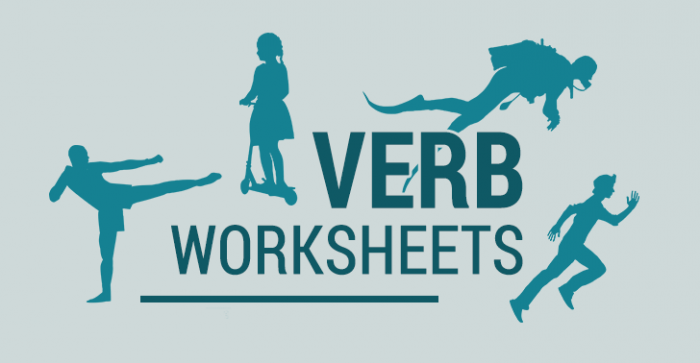
Verb Printable Worksheets
As you may already know, verbs are simply “doing” or “action” words. And verbs are an important part of speech in English. In these 7 verb worksheets, we touch on the various types of verbs in the English language.
1. Daily Routines Worksheet
In this paired activity, students use a daily routines worksheet to practice present tense verbs.
They ask each other questions about their daily, weekly, and monthly habits, like “Do you wash your hands every day?”
This encourages meaningful conversations about personal routines, making everyday activities a springboard for engaging English practice.
2. Irregular Past Tense Verbs Worksheet
This worksheet tests students’ knowledge of writing the irregular past tense for 10 verbs. In addition, it has basic matching with each irregular verb.
As a final step, they brainstorm additional irregular verbs. This expands their knowledge beyond the worksheet, helping irregular verb mastery.
4. Linking Verbs Worksheet
Students read 15 sentences, circling linking verbs in each. They learn that linking verbs connect subjects to nouns or adjectives rather than showing action.
For instance, in “I feel sick,” “feel” links “I” to “sick.” This exercise sharpens students’ ability to identify verb functions and understand sentence structure.
5. Transitive and Intransitive Verbs
Students label sentences with “T” for transitive or “I” for intransitive verbs. They learn that transitive verbs act on objects (e.g., “He played the piano”), while intransitive verbs don’t (e.g., “She slept all day”).
Because they can categorize verbs, students enhance their grasp of sentence structure and verb usage. It’s good for constructing clear and grammatically correct English sentences.
6. Imperatives: Simon Says
Only follow commands prefaced by “Simon Says” – it’s all about keen listening and quick reactions. “Touch your nose” means stay still… but “Simon Says touch your nose” gets everyone moving.
Our worksheet offers a variety of actions, from simple gestures to more complex movements. This game is an energetic way to blend physical activity with English learning.
7. Action Verbs Charades
Teams act out scenarios together while others guess. It’s perfect for shy students and builds teamwork.
Our worksheet provides creative ideas to get started. Watch as vocabulary comes to life, non-verbal skills improve, and even the quietest students join the fun.
It’s an energetic way to practice English that gets everyone involved and laughing.
How to Teach “Doing” or “Action Words”
These 7 verb worksheets teach “doing” or “action words” and help students formulate sentences.
Whether it’s verb conjugation with present simple, imperatives, or past tense, they are challenging enough to keep students engaged in learning verbs.
In addition, some of these verb worksheets include activities to get your students up and moving while teaching an important grammar point. All you have to do is remind them what it is.
If you like these verb worksheets, make sure to check out our adverb worksheets which are words that describe verbs.


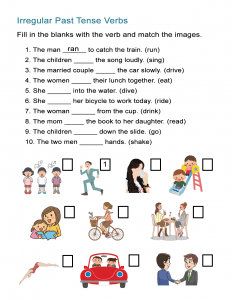
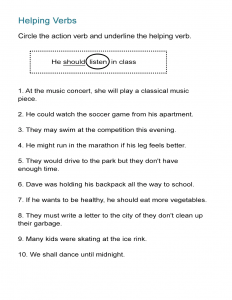

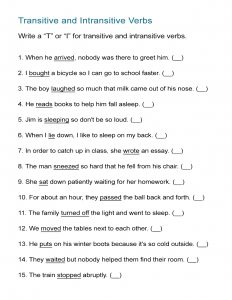
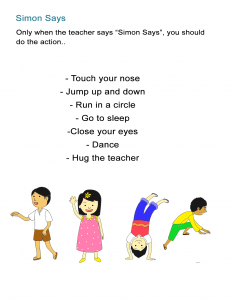

Grammar Worksheets
Adjectives Worksheets
Comparative Adjectives
Opposite Word Search
Opposites For Kids
Opposite Board Game
Superlative Adjectives Crossword
Adverbs Worksheets
Adverb Frequency
Adverb Quiz
Circle the Adverb
Transition Words
Nouns Worksheets
Collective Nouns
Common/Proper Nouns
Countable and Uncountable Nouns
Irregular Plural Nouns
Possessive Nouns
Singular/Plural Nouns
Preposition Worksheets
Draw the Preposition
Preposition of Movement
Preposition of Place
Time Prepositions
Where is the Apple?
Verb Worksheets
Daily Routines
Helping Verbs
Irregular Past Tense
Linking Verbs
Transitive and Intransitive Verbs